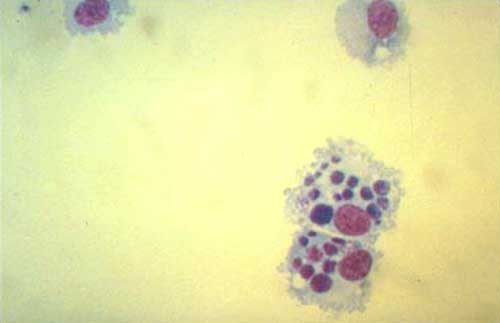Volume 8, Number 2—February 2002
Perspective
Traditional and Molecular Techniques for the Study of Emerging Bacterial Diseases: One Laboratory’s Perspective
Figure 4

Figure 4. . Canine monocytes (DH82) cultivated in vitro and heavily infected with Ehrlichia chaffeensis, as viewed by light microscopy after Giemsa staining. Typical ehrlichial inclusions (morulae) are observed within the cytoplasm of the infected cells (Giemsa, original magnification X600).
Page created: April 18, 2012
Page updated: April 18, 2012
Page reviewed: April 18, 2012
The conclusions, findings, and opinions expressed by authors contributing to this journal do not necessarily reflect the official position of the U.S. Department of Health and Human Services, the Public Health Service, the Centers for Disease Control and Prevention, or the authors' affiliated institutions. Use of trade names is for identification only and does not imply endorsement by any of the groups named above.